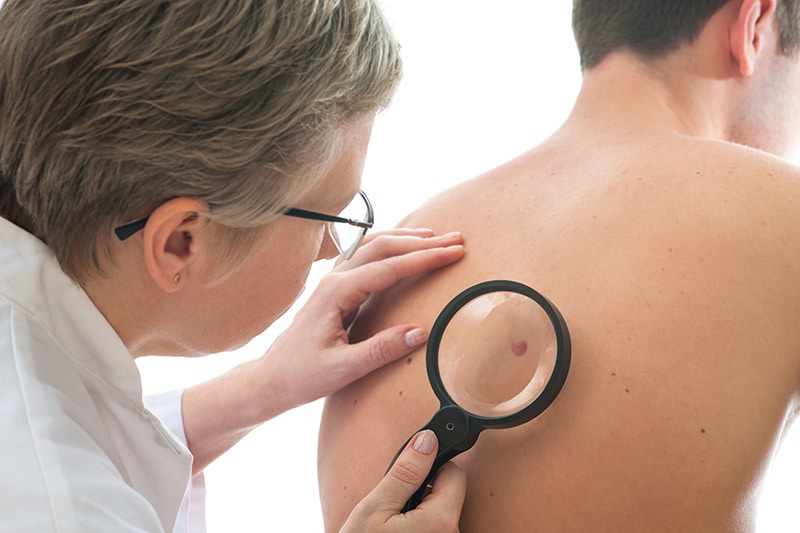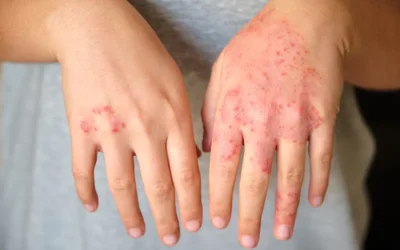Merkel Cell Carcinoma (MCC) is a rare, aggressive type of skin cancer. MCC usually develops as a painless, firm bump that can be red-purple or skin-colored and is typically detected when it begins to grow rapidly. The American Cancer Society (ACS) estimates that about 2000 people are diagnosed with MCC each year in the US, but notes that the number of cases per year has been rising rapidly over the years. To report diagnosis of MCC, a medical coding service provider will assign the most appropriate ICD-10 code based on the specific anatomical place, position or site of the tumor.
Merkel cells are found in the outermost layer of the skin and work as touch receptors. Though these cells are present in various areas of the body, they are most prevalent on the fingertips and lips/face where touch sensation is high. MCC occurs as a result of uncontrolled growth of cells that have some characteristics that are similar to the normal Merkel cells of the skin. However, the exact causes of MCC are not known.
Risk Factors
Typically, the carcinoma appears on areas of the skin that are constantly exposed to the sun, such as the head/neck and arms. However, it can also develop in other areas of the body, including those that are not exposed to the sun, such as the buttock or the scalp under hair.
People over the age of 65 are more likely to get MCC. Men are nearly twice as likely to develop the condition compared with women. Risk factors include:
- Long-term sun exposure
- Fair skin
- Weakened immune system (though immune suppression is absent in 90% of those who develop MCC)
- HIV infection
- Medications taken after organ transplants
- Use of tanning beds or ultraviolet light therapy for psoriasis
- Having another type of cancer, especially another type of skin cancer
Up to 89% of MCC tumors have three or more of the following characteristics, explains merkelcell.org:
A: Asymptomatic-88% of MCCs are not tender
E: Expanding rapidly-63% of MCCs have grown significantly within the past 3 months
I: Immunosuppression-MCC patients are 16-times more likely to be immunosuppressed
O: Older than 50-90% of MCC patients are over age 50 and MCC risk keeps increasing with age
U: UV exposed fair skin-81% of MCCs arise on sun-exposed skin and 98% of MCCs arise in people whose skin tone is light
Prompt, customized treatment is crucial as MCC progresses quickly and is usually life-threatening in about 1/3 of patients.
Diagnosis
MCC grows and spreads quickly. Tumors in one area may spread to a nearby area and also lymph nodes, which may grow into visible lumps under the skin in the neck or under the arm. MCC looks like other types of cancer when it first appears. The condition is usually diagnosed when a biopsy of the tumor is performed. Other diagnostic exams that physicians recommend may to check if MCC has spread include lymph node biopsy and imaging tests such as CT scans, MRI scans and PET scans. Like most cancers, early detection may make treatment easier.
MCC is classified into stages based on the size of the primary tumor and extent of disease in the lymph nodes and spread in other areas in the body. The stage at diagnosis is the key determinant of the risk for later spread and treatment options.
ICD-10 Codes for Merkel Cell Carcinoma
The availability of specific ICD diagnostic codes for MCC has greatly improved the understanding and management of this rare but often fatal skin cancer.
C4A MCC Unspecified
MCC of the Face
C4A.0 Lip
C4A.1 Eyelid (including canthus)
C4A.10 Eyelid, unspecified
C4A.11 Eyelid, right
C4A.12 Eyelid, left
C4A.2 Ear (and external auricular canal)
C4A.20 Ear, unspecified
C4A.21 Ear, right
C4A.22 Ear, left
C4A.3 Face, unspecified
C4A.30 Face, other part
C4A.31 Nose
C4A.4 Scalp and Neck
MCC of the Limb
C4A.6 Upper limb (including shoulder)
C4A.60 Upper limb, unspecified
C4A.61 Upper limb, right
C4A.62 Upper limb, left
C4A.7 Lower limb (including hip)
C4A.70 Lower limb, unspecified
C4A.71 Lower limb, right
C4A.72 Lower limb, left
MCC of the Trunk
C4A.5 Trunk, unspecified
C4A.51 Anal or perianal skin
C4A.52 Skin of breast
C4A.59 Trunk, other part
Other MCC
C4A.8 Overlapping sites (eg, junction of neck and trunk)
Metastatic MCC
C7B.1 Metastatic MCC or nodal presentation without known primary
C4A.9 unspecified site
History of MCC
Z85.821 History of MCC of the skin
MCC Coding Guidance
Here are three pertinent points about MCC ICD-10 coding based on FAQs answered by merkelcell.com:
One common question is: at what point during treatment of a patient diagnosed with MCC would the patient visit be coded as prior history of MCC? As there are effective treatments for MCC now, there is no cut-off time. The guidelines for coding malignancy state: “When a primary malignancy has been previously excised or eradicated from its site and there is no further treatment directed to that site and there is no evidence of any existing primary malignancy, a code from category 285.821: Personal history of malignant neoplasm, should be used to indicate the former site of the malignancy.” The intent of the history codes (285.821 for history of MCC) is to indicate that the condition no longer exists and is not receiving any treatment, but that has the potential for recurrence, and therefore may require continued monitoring.
Another question relates to coding MCC recurrence and if both the prior history code and code for the current lesion have to be listed. If MCC recurred after treatment had ended and the patient was in the history phase, a Chapter 2-Neoplasms code should be assigned for the new malignancy (even if it is recurring at the site of the previous malignancy). Code 285.821 also has to be listed to show that there was a history.
Finally, coders often ask what site the Other MCC ICD code includes and if there are any other site other that can be included in this code. Code C4A.8: Merkel cell carcinoma of other sites includes the sites of genital and buttock. “Specified site not elsewhere classified” is included in code C4A.8 in case a site is documented that is not specifically in the index.
Treatment
The physician will determine the treatment plan based on various factors, such as how early MCC was diagnosed, the patient’s overall health, and whether the cancer cells have spread to other body tissues. One of the following treatments or a combination of these treatments may be used to treat MCC:
- Immunotherapy – the use of specific medications to help the immune system fight cancer.
- Surgery to remove the cancerous tissues – the most common option, Moh’s micrographic surgery involves layer-by-layer skin removal. People who have cancer on their faces benefit from such surgery.
- Radiation therapy to kill cancer cells is often combined with Moh’s surgery for better results.
- Chemotherapy uses drugs to kill cancer, but may not provide lasting results.
With the availability of effective treatments, most people recover fully from MCC When it is detected and treated early.
MCC cannot be prevented, but for most people the risk of developing the condition is low. Avoiding excessive exposure to the sun is the most important way to lower risk of skin cancer. Dermatologists and healthcare organizations also recommend not using tanning beds and sun lamps. Importantly, building a healthy immune system is the best protection against any kind of cancer.
Reporting skin conditions on claims can be complex. An experienced medical billing and coding company can help physicians ensure correct coding. Expert coders can accurately identify and assign the most specific ICD-10 codes for the documented condition. This is crucial for timely and accurate billing and claims submission.




